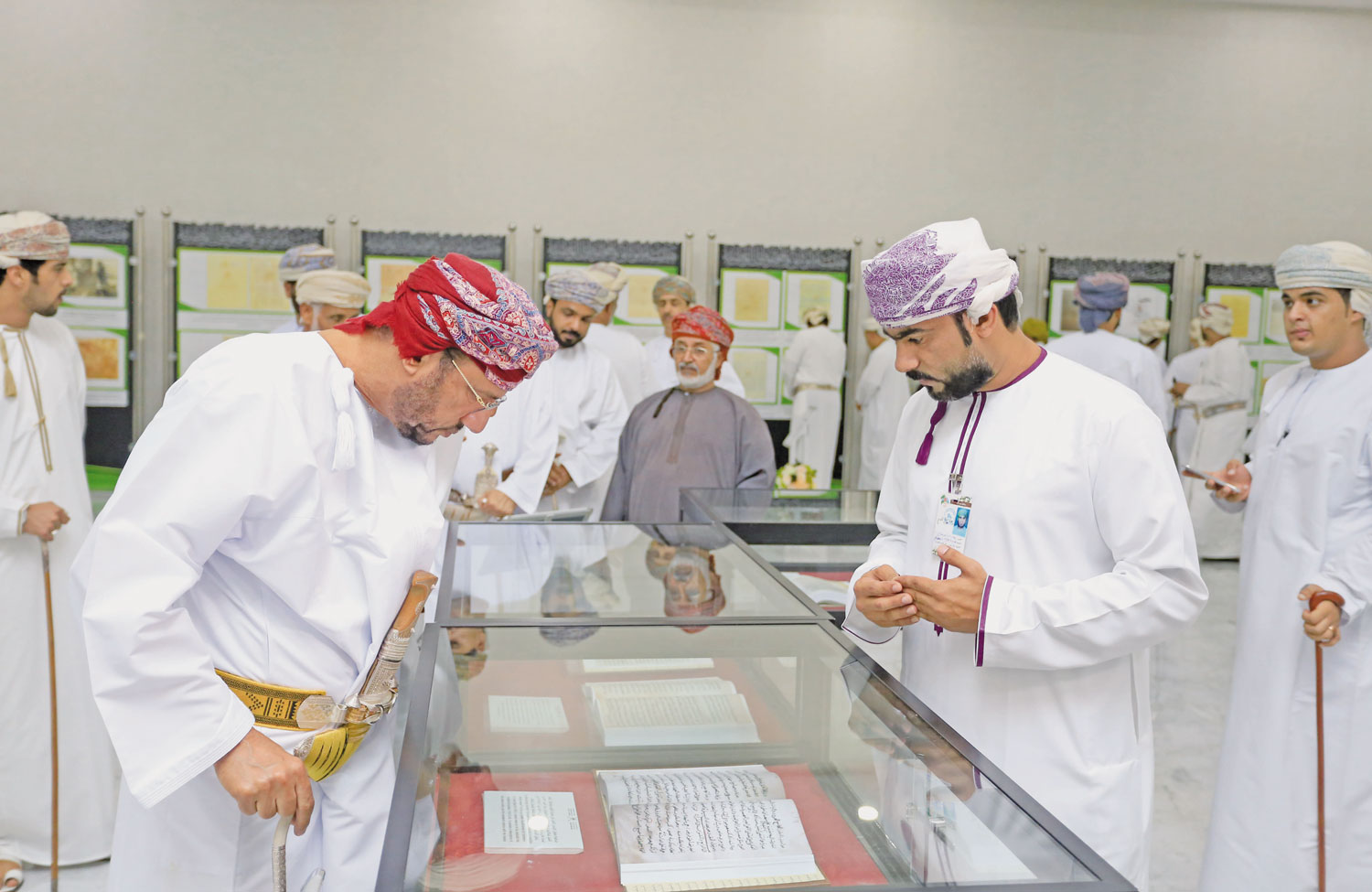

The National Records and Archives Authority (NRAA) opened the documentary exhibition in Salalah last week which includes more than 200 records.
The exhibition includes various pavilions showcasing Oman through different eras such as: The Royal Correspondence, Oman through history, Oman in the international press, treaties and conventions, maps, speeches and other miscellaneous topics.
The exhibition lasts for eight days until August 15th at Al Laban Hall “4”, from 5 pm to 11 pm.
The exhibition was inaugurated by Shaikh Salem al Shanfari, the Chairman of Dhofar Municipality and Dr Hamad al Dhoyani, the Chairman of NRAA.
Dr Al Dhoyani said, “The exhibitions play a central role in the localisation of knowledge by helping the national talents to install knowledge and acquire experience. They are a fertile environment for community participation, and especially the development of communication and interdependence with the community and communities of common interests.”
He added, “The documentary exhibition aims to introduce the Omani civilisation and highlight its civilised, historical and cultural aspects.”
Dr Juma al Busaidi, Director General of the Directorate General for Research and Documents Exchange said, “This exhibition is the result of previous exhibitions which NRAA participated at, but this year the organisers decided to expand the content of the exhibition in order to enrich the exhibition with various documents, and to introduce the great cultural heritage that the Sultanate boasts in different periods of time. The visitor of the exhibition will hint the diversity of documentary content and the richness of the documents presented.”
The exhibition content

The first corner includes the Royal Correspondence, which presents a historical overview of the most prominent images of the life of the sultans of Oman, the affairs of the country and the organisation of internal and external affairs. It also showcases some images of a country that succeeded to establish a diplomatic relation with many countries of the world.
Some of the letters showcased in the corner is the letter of the Imam of Oman to the Ottoman Sultan, clarifying his position on the reconciliation between the Ottoman Empire and the Shah of Iran after he besieged the city of Basra in Iraq and the siege was lifted in cooperation between the Imam of Oman and the Governor of Baghdad in 1779. There is also a letter from the Russian Consul in the Gulf to Sultan Faisal bin Turki seeking his approval to dock a ship in Muscat belonging to the Commercial Boat Company in 1905.
The second pavilion tells the history of Oman, where the history of Oman is presented as a human settlement that attracted the ancient man to live during the successive stone ages ending with the political developments in the period that followed the emergence of the state the Ibadi, Nabhani and Busaidi Imamate.
In the third corner, “Oman in the World Press” discusses the most important articles and pictures in the local, Arab and international newspapers that published the news of Oman in various political and economic and cultural activities.
There is an article in the monthly magazine of Italy that speaks about the geographical location of the Arabian Peninsula and its population, the spread of Islam in it and the attempt of the Ottoman Empire to control it. It mentioned that the noblest of the Semitic races belong to the Arabs who settled in Yemen and Oman.
The fourth pavilion is devoted to the “conventions and treaties” that describes the diplomatic and friendly relations between Oman and the Indian Ocean countries and the rest of the world where the imams and the Omani sultans exchanged gifts and official visits with the other rulers and heads of state and ambassadors.
The fifth corner of the documentary exhibition, “Maps”, displays many maps showing the length of Omani kingdoms throughout history, in addition to the important maritime routes and the areas covered by the world trade movement at the time.
MAI AL ABRIA
Oman Observer is now on the WhatsApp channel. Click here



